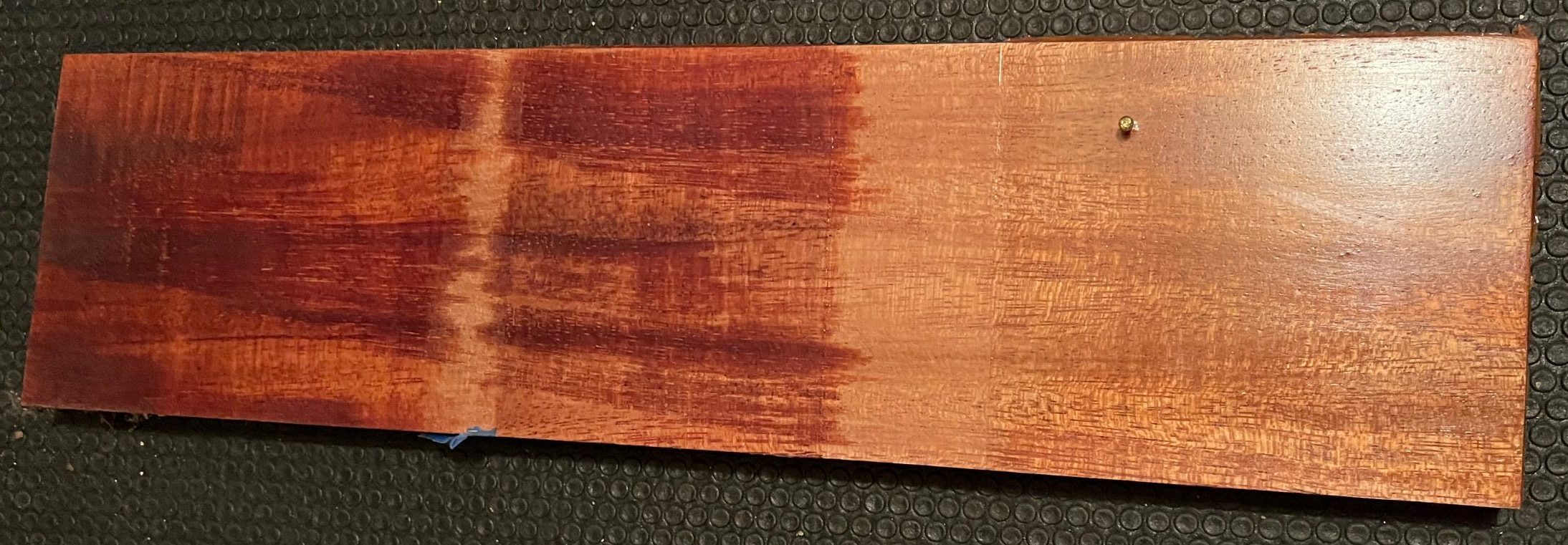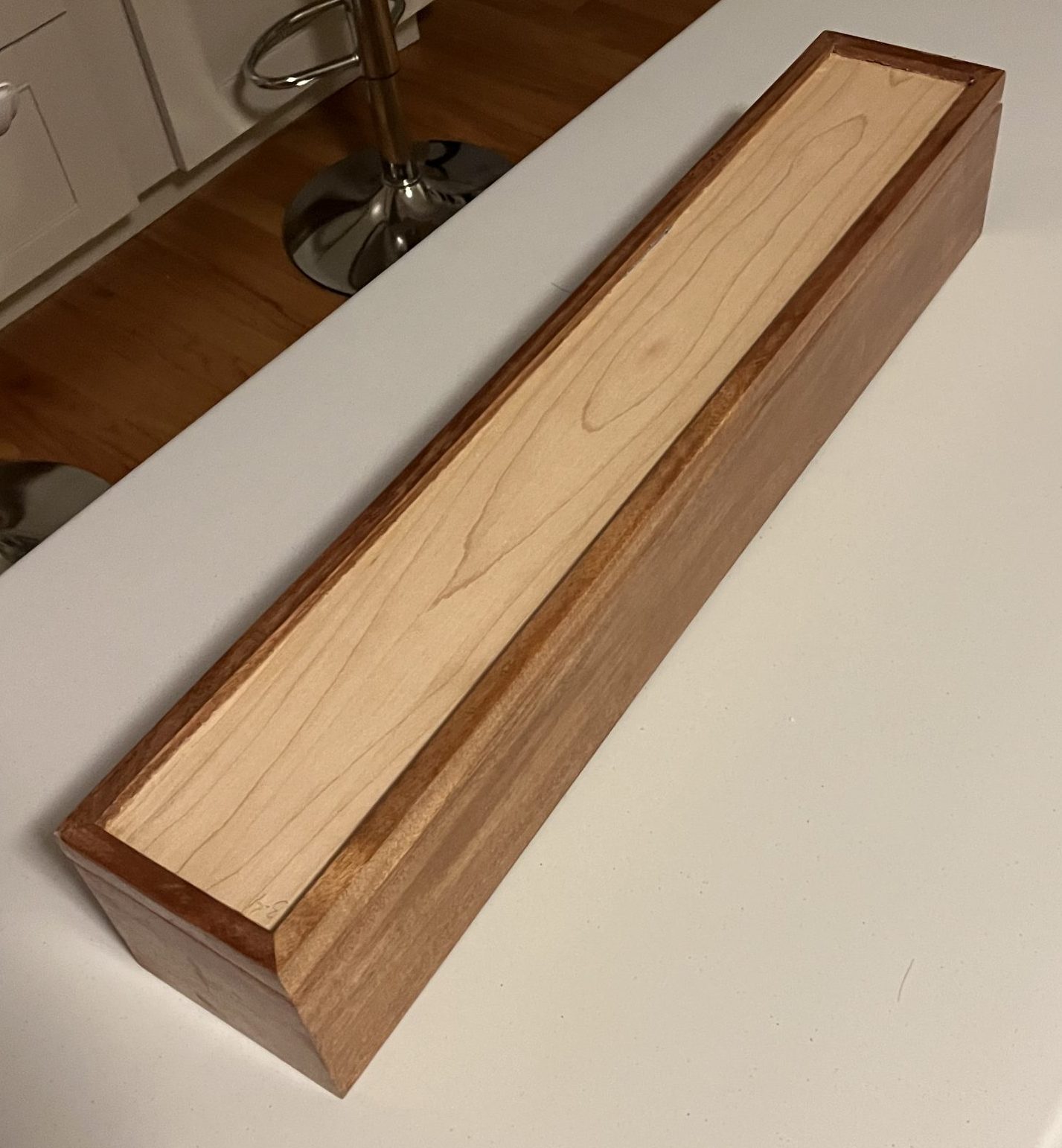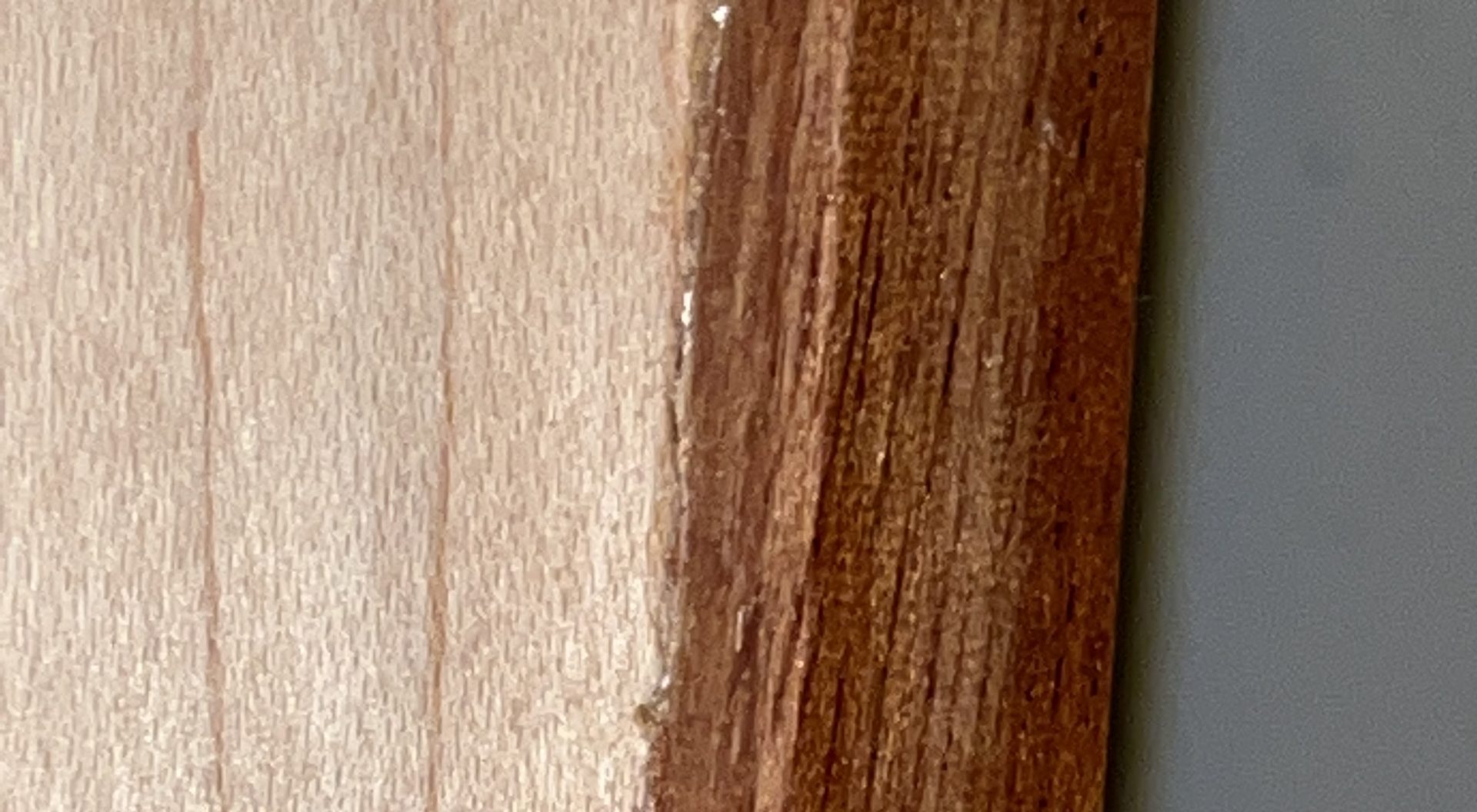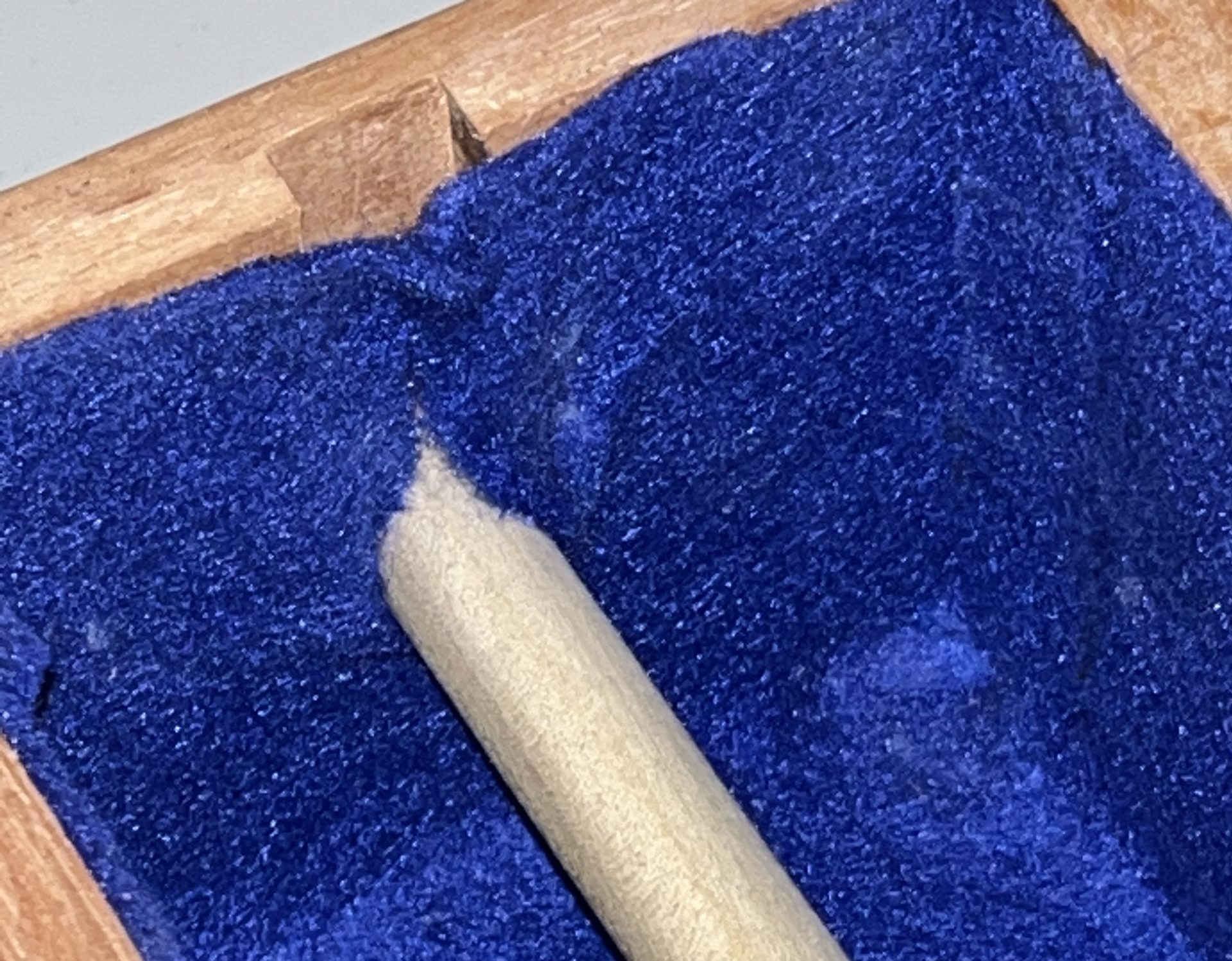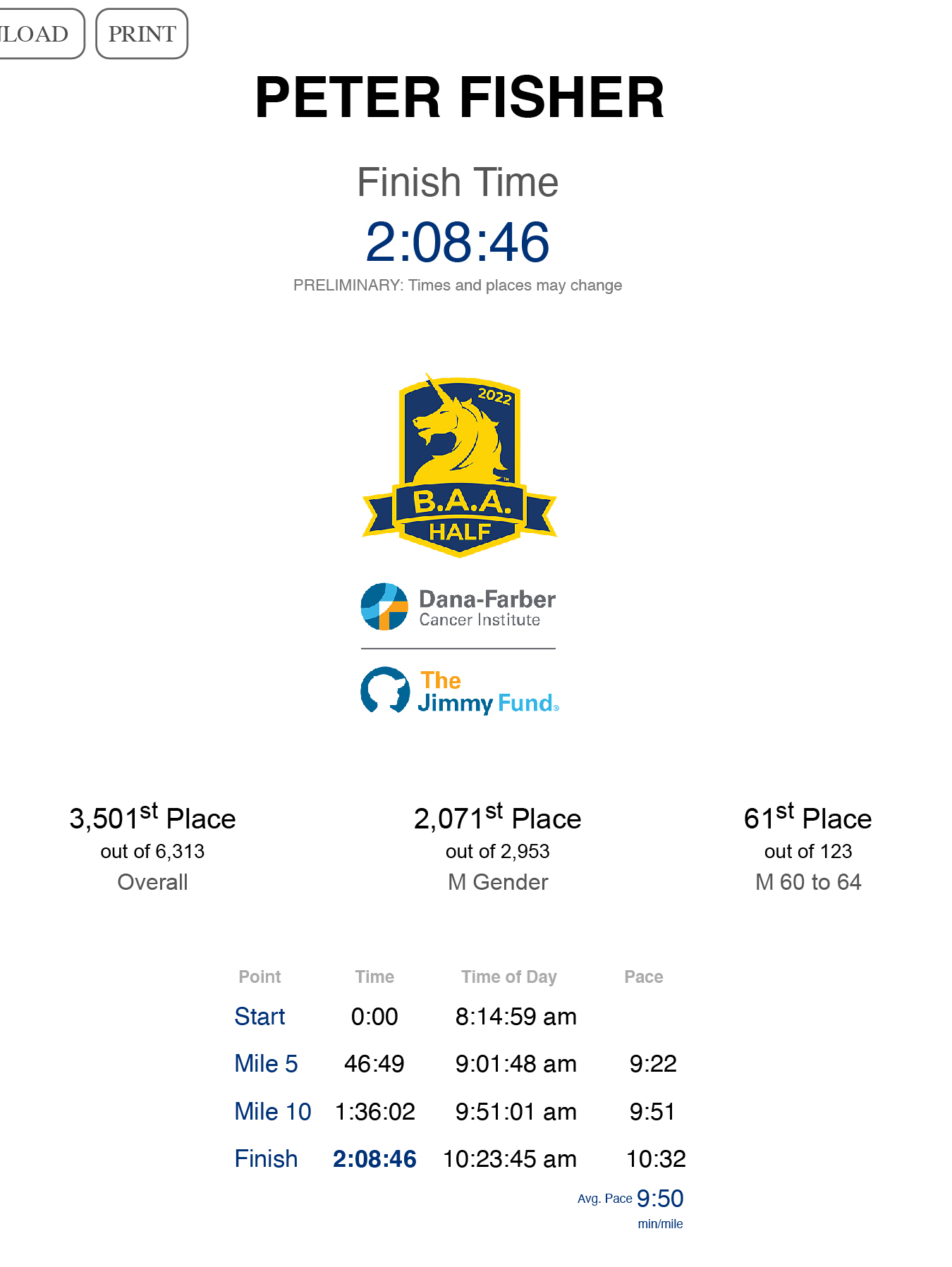Platform here.
Author Archives: fisherp
ORCD Newsletter: September 14, 2023
Dear ORCD Community,
Welcome back for Fall at MIT. I hope you have all had a great summer and have rested for what promises to be an eventful Fall.
At ORCD, we have made several important staffing changes. Michel Erb has joined us from Novartis as our Director of Platforms, Infrastructure, and Data Services, taking charge of our GetWell plan for Engaging. Dr. Shaohao Chen, formerly of the Brain and Cognitive Sciences Department, has also joined ORCD full time, and is initially tasked with integrating the Open Mind cluster as a Computational Support Specialist. Renée Hellenbrecht comes to us from the MIT Libraries as the new ORCD Program Administrator, taming MIT’s administrative miasma. Finally, Chris Hill, Director of the Research Computing Project and Research Scientist from Earth, Atmospheric, and Planetary Sciences, is now our Director of Scientific Consulting. Chris has been at the center of all things ORCD since the start, and we are excited to have formalized his role.
These remarkable people join James, Lauren, Paul, and I, along with our TechSquare team, to fulfill our mission to bring computing to the MIT research community.
We will return to a bi-weekly newsletter, bringing you more details about our new team members, our developing ORCD vision of research computing, and idiosyncratic news from science and other parts of academia.
Welcome to our new students, faculty, and staff, and welcome back to everyone else.
Peter
Above the Fold
- Open Data Prize: from Chris Bourg (Director of the MIT Libraries) We are now seeking nominations for the 2023 MIT Prize for Open Data. Nominations are due September 15 at 5pm.Information here.
- High Performance Extreme Computing (HPEC) Virtual Conference: Monday Sept. 25, 2023, 9 am – 6 pm. Information here.
What We’re Reading
- Future gravitational waves detector Cosmic Explorer: 3Q with Matt Evans
- “Whack-a-rat“, The New York Review of Books
- “How early-career researchers can learn to trust negative data: five simple steps”, Jelle van der Hilst in Nature
Picture of the Month
 26-100 after the first day of classes
26-100 after the first day of classes
Message from ORCD – Thursday May 4, 2023
Dear ORCD-All,
Things for ORCD have been hectic: our top priority remains hiring a Platform Infrastructure and Data Services (PIDS) Director and a Project Manager. James and Heather have gone through many applications and will start interviews soon.
At the same time, several groups have approached us about adding computing or storage to our shared Engaging system. We encourage this: the sharing increases the use of MIT computing and storage resources, and having everything under one roof makes managing easier. This gives Chris, James, and Paul plenty to do.
Lincoln Lab’s SuperCloud machine remains popular, especially with conferences approaching, and Lauren holds office hours, consults with users, and appears in videos on how to use the machine best.
The MIT Research community keeps us very busy.
Some things have come to our attention:
- We’ve heard the frustration in certain quarters about hyper scaler (AWS, Google, Microsoft) billing as hard to understand, at best, for accounts set up using a credit card or purchase order. IS&T has a portal that connects your hyper scaler account with an MIT account with a charging limit and aims to make user charges easier to understand. If you don’t currently use it, please give it a try. You can ask for help at servicedesk@mit.edu.
- Some fields have started to require an Open Researcher and Contributor Identifier, ORCID, to accompany submissions to journals and conferences. Having an ORCID gives a researcher name flexibility and makes access to their publications easier. Find out more here.
Enjoy Spring!
Peter
Above the Fold
- President Kornbluth’s inauguration speech, “Join us for something important and new.”
Announcements
- Colleagues and heavy SuperCloud suers in the Kavli Institute may have observed a star being swallowed by its Sun.
- IBM’s Inspiring Quantum Summit, video here.
- The deepest fish ever recorded. Science pictures from Nature.
ORCD Message – Friday, March 29, 2023
Dear ORCD Community,
In this year’s budget cycle, ORCD received support for the ORCD Secure Research Data Enclave (OSRDE) and our “Get Well Plan” to dramatically improve the quality, capacity and reliability of our shared clusters. We will begin design work and engage the CRCD for advice in the coming months. Great news!
ORCD has also partnered with the MIT Climate Sustainability Consortium, MCSC, to understand our data center energy use and efficiency. We have engaged two UROP students, Wendy Zhang and Yichen Gao who will work with us over the Spring term and hopefully beyond.
Peter
Above the Fold
Announcements
- For GPU fans, Chris Hill lost power at his house and sent this video of his generator producing 5.7 kW, about the same power as eight A100s.
The noise level is 95 dB, also aapproximately eight A100s. Think about that…
- More quantum wormhole drama from Quanta Magazine.
- QuEra is a quantum computing startup spun out of MIT that offers access to their 256 qubit quantum simulator via AWS. They have just partnered with the National Energy Research Scientific Computing Center to bring quantum computing into the DOE research ecosystem.
ORCD Message, February 14, 2023
Dear ORCD Community,
We have been busy since the first of the year. First, Monday will be our first day in the news offices at 105 Broadway, 7th floor. We’ll be ready for visitors soon. In the meantime, here is a picture with ORCD Executive Director James Cuff and Space Administrator Greg Raposa off to the left:
We have a big table for office hours. I’ll order a good coffee machine,
ORCD started as ORC, and the last D (for Data) came later when we recognized an urgent need for secure storage across the research enterprise. In addition to storing data generated by computations and experiments, MIT researchers gain access to many different data sets that come with Data Use Agreements that require security beyond what MIT has in on-campus data centers and at MGHPCC. These requirements continue to “evolve” (i.e., get more onerous). At the same time, MIT researchers increasingly need to make their data available outside MIT as part of Data Management Plans required for federal funding (as always, please get in touch with Interim Head of Data and Specialized Services Amy Nurrnberger or go here for help. These imperatives combine to make the D in ORCD our top priority in the near term (as well as keeping people from calling us “orcs”).
Peter
Above the Fold
- Good article about chatGPT and lossy compression
Of possible interest
- Prof. Dennis Whyte talks about fusion with Lex Friedman here
- World Wide Web Consortium is now a public-interest nonprofit organization
- Many in business think of computing hardware as lasting about three years. Meta begs to differ.
ORCD Message – January 19, 2023
Dear ORCD-all,
Happy New Year.
Just as 2022 ended, two remarkable results came out that will impact research computing in the long run.
First, a team from MIT, Harvard, Caltech, and Google showed they could use the Google Sycamore quantum computer to solve equations describing quantum information passing through a wormhole. The equations had been solved in other ways,and the result is well known, but I think the use of the quantum computer in this way tells us what will come. I expect ORCD will need to learn how to host quantum simulators and computers in the next five years and this will present an exciting challenge.
The other result was from the National Ignition Facility that showed a system of 192 lasers could compress a gas of deuterium and tritium, making the gas hot enough, round enough, and dense enough for the deuterium and tritium to fuse, releasing more energy than has been put into the capsule containing the gas pellet. 2 MJ went in an,d 3 MJ came out, all enabled by enormous simulations on supercomputers. MIT researchers formed part of the team. MIT will need to make computing at this scale available to enaallowher exciting research, including for our SPARC, our own fusion machine.
Still trying to digest chatGPT.
With the new year, we have some other interesting announcements below.
Peter
Announcements
- Office of Strategic Alliances and Technology Transfer (OSATT) Core has revamped the services to faculty for non-disclosure agreements (NDAs), data use agreements (DUAs), material transfer agreements (MTAs), and other research-related agreements. The improved NDA/DUA portal came out in early 2022 and the link is here” https://nda.mit.edu/fibi-agreement/#/landing.
- NIH New Data Sharing Policy Going into Effect here
Wooden Box
This fall, I took Introduction to Woodworking: Build a Box from the CCAE with Carl Spagnoli. The class meets eight Tuesdays from 6-9 pm at the CCAE building at 52 Brattle St. In Cambridge in the wood shop. Carl was an excellent teacher, my six classmates were interesting and fun, and I learned a lot. This post captures some of what I learned.
Suggestions
- I used African mahogany for my boss, which presented some challenges. The plank measured 8 eight feet long, making it hard to cart. Mahogony gets “furry” and needs extra sanding, the large grain requires grain filler (three coats), and the final project needs sealing. The finished product looks good, but pine or cedar does too.
- I decided to make a long wooden box to hold tapes my wife Jane Ann uses for bullet journaling. My final box measured 25 3/6″ x 4″ x 4″. The long lid piece warped a l; little, leaving a gap you can see here. You might think of doing something with a smaller aspect ratio.
- You will make mistakes when you make your box, correct your errors and keep going. Don’t go back and start yourself — you will never finish. My box has about seven apparent mistakes by reckoning, but I mostly managed to hide them. You will not complete the eight sessions if you go back too much to correct things.
- The in-class sessions will get you an assembled box. You will most likely have to do the finishing — sanding, staining, sealing, and hardware — at home or during the makeup session, which Carl kindly runs. I spent about ten hours finishing spread over about four weeks — grain filler, stained, sealers need 2-3 coats each and will have to dry between each coat, so I spent about a half hour each day over the several weeks. I had the time, and it proved worth it, but I suggest thinking about what you want to do to finish and getting advice from Carl that fits the time you can put in.
- While building, do an l; of measuring, checking, and keeping notes. You will make your plans on paper in 2 dimensions, but the box has three dimensions, and lots of measuring will help you think in 3D.
- In class, you will spend time waiting to use the various power tools. I always had a side project to work on while waiting. I wanted to see if I could make a Soma puzzle using a hand saw and many clamps. I learned I probably could, but it would take much more time than I wanted to spend.
- You should do lots of test cuts on scrap — not just on the tower tools but for everything—an experiment in particular with clamping. Talk to Carl. I tried several tests to finish the following:
- Look at what your classmates make.
The Final Product
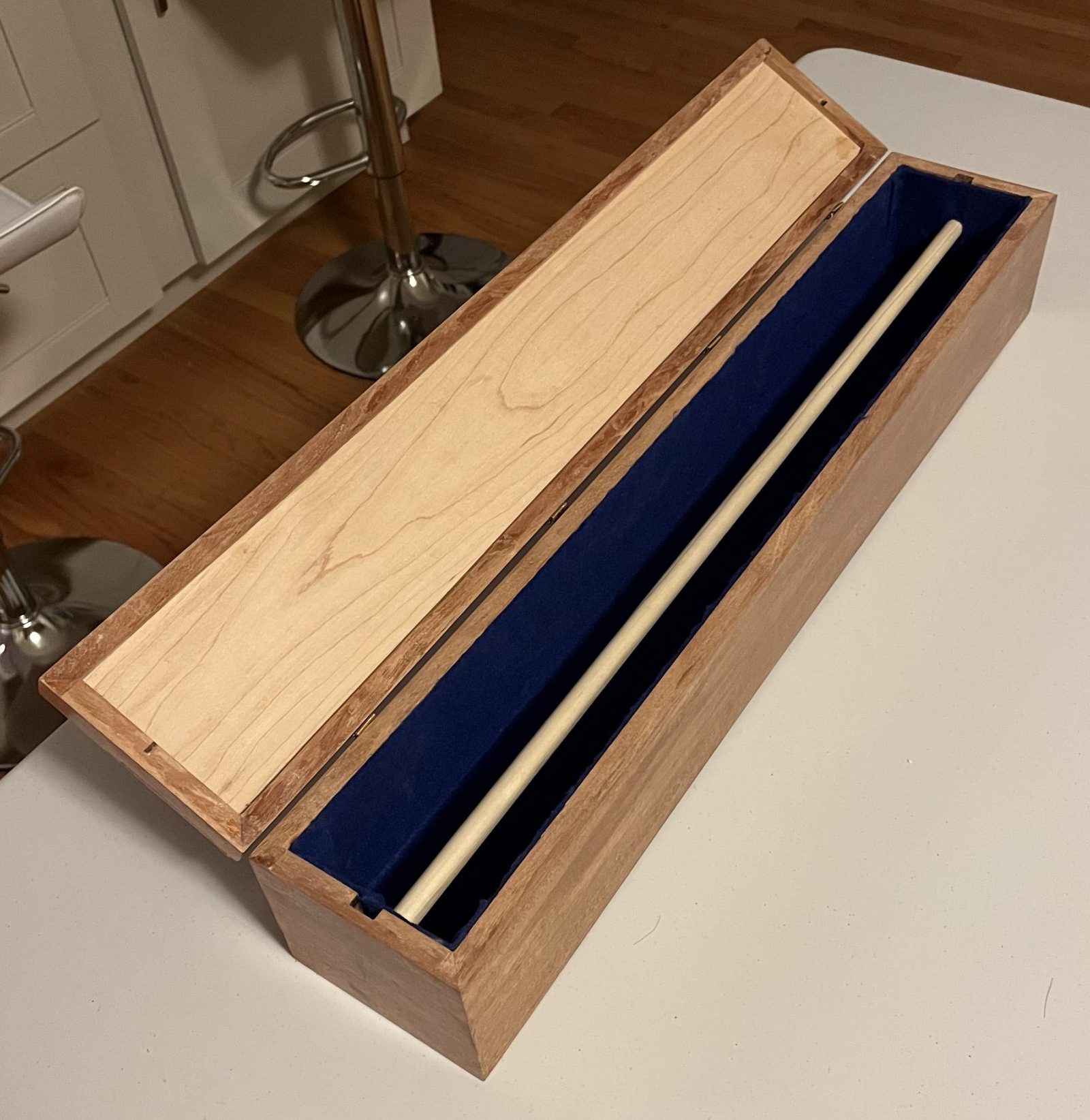
Box with the lid open – blues felt lines the box, and the wooden dowl holds 3″ diameter washy tape spools. The dowl sits in groves routed into the end pieces of the box.

Wooden box used in a gift display.
“Features” – mistakes and deficiencies
- Routed grooves in the sides of the box capture the top and bottom pieces 1/4″ below the top and bottom of the sides, despite careful taping. Getting the grain filler and sealant out presented a problem, as shown here:
I could have used a Dremel tool to improve it, but I did not have time before Christmas.
- I did not correctly route the joints (the end prices rode up on the table saw during cutting), so I had to shape the top and bottom pieces. This problem did not show up in the finished product.
- The long lid bent after separating from the box, probably from internal stresses, making a 1/16″ visible gap in the closed box:

The gap between the body of the box and the lid. Also, the head of the screw on the hinge to the left sheared off during installation.
- The hinges used small screwed, and one of them sheared off during installation. The needle nose plier may have worked getting the shank of the screw out of the wood, but I had concerns about damaging the finish and decided to leave it.
- I used blue felt to line the box and encountered several problems. I cut the felt using a template from the box measurements, but the felt contracted during gluing, so I had to make several patches. Scissors did an excellent job cutting the felt, but I needed an X-axcto knife to open the holes in the end for the dowls. The X-acto just cut tore the felt, as seen here:
- Finally, I should have doubled over the felt at the edges for gluing so you would see a fold rather than the ragged edge of the felt.
- The out-of-true guardrail on the table saw and the not-quite-square side of my box combined to leave a 1/16″ mismatch when we cut the lid from the pack. I glued in some mahogany Carl had and sanded, so you can’t see the mismatch, but this contributed to the gap between the lad and the body on the closed box.
BAA Half Marathon Badge
Dark Matter Book Talk
Nov. 24, Harvard Sq. Books here
ORCD Message, Sept. 29, 2022
Dear PI community,
As the Office of Research Computing and Data (ORCD) continues on our mission to build world-class research computing services, we are excited to share with you the appointment of our inaugural executive director Dr. James Cuff.
James will be responsible for organizing services and support within ORCD, reporting to Prof. Peter Fisher, head of ORCD, and Mark Silis, VP of IS&T. His true passion and experience reside in providing frictionless access to advanced research computing services while carefully managing budgets and teams to get the job done and delivered on time.
James joins us with over two decades of experience in incrementally complex research computing environments. Over eleven years as assistant dean and distinguished engineer, James and his team designed and built Harvard University’s research computing organization from the ground up. James was one of the founding members of the original MGHPCC design and built team, a facility we at MIT continue to invest in to support our most advanced, intensely computational activities. More recently, James served as an independent consultant working with many technical startup companies covering many disparate aspects of advanced high performance and scientific computing.
In the coming week, James and I, will begin regular office hours to meet with PIs interested in research computing and ORCD, as well as visiting school councils and labs. You can reach James at jcuff@mit.edu.
Please join us in welcoming James to MIT – having him as part of ORCD represents a real coup for ORCD and MIT.
Best,
Peter Fisher – Head, ORCD and Thomas A. Frank (1977) Professor of Physics.
If you would like to receive future updates from ORCD, please email orcd-admin@mit.edu to be added to the email distribution list.


